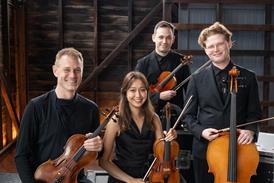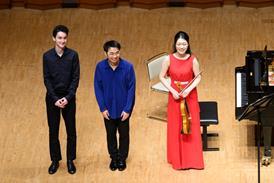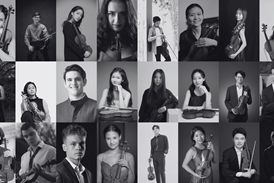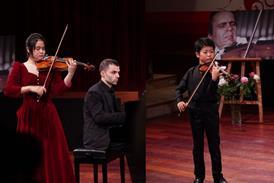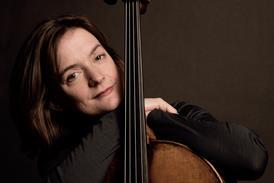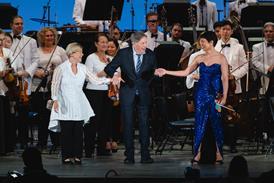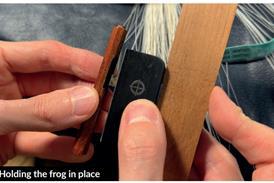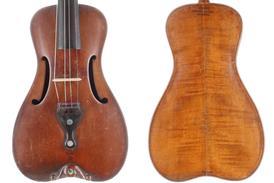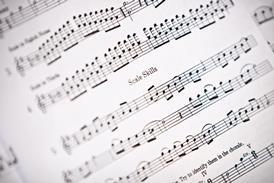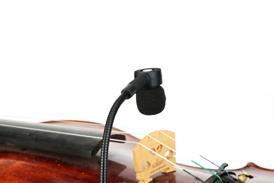Lutherie – Page 3
-
 Premium ❘ Feature
Premium ❘ FeatureTrade Secrets: Repairing a bow stick
François Louant presents a method for attaching new wood to the stick at the frog end, when the original material is unsalvageable
-
 Premium ❘ Feature
Premium ❘ FeatureIn Focus: A 1924 violin by János Spiegel
Zoltán Délczeg examines a 100-year-old instrument by Hungarian maker János Spiegel
-
 Premium ❘ Feature
Premium ❘ FeatureMy Space: Mensur Avdić’s Tuzla workshop
The maker presents his workshop in Bosnia & Herzegovina
-
 Premium ❘ Feature
Premium ❘ FeatureMaking Matters: Speed of sound in bow wood
Why is it that a violin’s sound quality can change so radically with a different bow? Massimo Lucchi explains the principle behind the speed of sound in bow wood
-
 Premium ❘ Feature
Premium ❘ FeatureFive generations of the Weidhaas–Finkel bow making dynasty
Gennady Filimonov continues his survey of the great 20th-century German bow makers with a look at the Weidhaas–Finkel dynasty, which now boasts five generations in the profession
-
 Premium ❘ Feature
Premium ❘ FeatureMerchants of Venice: Venetian lutherie
In the 16th century, the Republic of Venice was a hotbed of innovation for stringed instrument makers – and the members of the Linarol family were at the heart of the trade. Stefano Pio explores the archives to reveal their fascinating and often colourful lives and careers
-
 Premium ❘ Feature
Premium ❘ FeatureTrade Secrets: Making a wooden peg shaper
A method for creating a model with an interchangeable blade
-
 Premium ❘ Feature
Premium ❘ FeatureMy Space: Yam Uri Raz’s Hawai’i workshop
The maker shows us around his shop in the city of Hilo
-
 Premium ❘ Feature
Premium ❘ FeatureIn Focus: A c.1740 viola by Johann Christian Hoffmann
Alex Krieger examines a viola by one of the best-known German luthiers
-
 Premium ❘ Feature
Premium ❘ FeatureMaking Matters: A violin made by ten luthiers
Over the course of a year, ten luthiers in nine countries made a violin together, sending each other the parts by mail. Christian Lloyd reports on the unique project ‘Violinabox’
-
 Premium ❘ Feature
Premium ❘ FeatureIn the zone: a one-person double bass repair method
For luthiers working alone, double bass repair can be a difficult task to take on. US bass maker Nick Lloyd presents his ‘Zone method’ for re-gluing a bass top using just one pair of hands
-
 Premium ❘ Feature
Premium ❘ FeatureLike father, like daughter: the Giorgis family of violin makers
New research in the Turin archives has uncovered fascinating insights into the life of the violin maker Nicola Giorgis. Claudio Amighetti reveals why Giorgis’s daughter Francesca Maria took over his workshop upon his death in 1745
-
 Premium ❘ Feature
Premium ❘ FeatureMy Space: Corvus Kwok’s Hong Kong workshop
The luthier takes us on a tour of his shop in Kowloon, Hong Kong
-
 Premium ❘ Feature
Premium ❘ FeatureMaking Matters: Testing an instrument’s sound using weight ratios
In contrast to the normal practice of using tap tones to determine an instrument’s sound, Veikko Jaatinen presents a method based on the weight ratios of a violin’s various parts
-
 Premium ❘ Feature
Premium ❘ FeatureIn Focus: A c.1750 violin by Michele Deconet
Peter Koerner examines the French maker’s mid-century instrument
-
 Premium ❘ Feature
Premium ❘ FeatureThe Strad Calendar 2025: Canada’s crème de la crème
The Strad Calendar 2025 celebrates the work of the Canada Council for the Arts, which has been matching players with fine instruments for 40 years. Christian Lloyd takes a look at the collection’s highlights
-
 Premium ❘ Feature
Premium ❘ FeatureTrade Secrets: Preparing the wood surface before varnishing
Samuel Peguiron shares a method involving a bespoke mixture and wood shavings
-
 Premium ❘ Feature
Premium ❘ FeatureFrom the land of a hundred violins: Amedeo Simonazzi
The luthier Amedeo Simonazzi was born into a region with a strong native musical tradition – which is almost forgotten today. Stefano Pio reveals how his surroundings influenced his career
-
 Premium ❘ Feature
Premium ❘ FeatureMaking Matters: Optimising sound spaces for good acoustics
Any luthier’s workshop requires a room or area with good acoustics to assess an instrument’s sound quality. Gideon Baumblatt and Simon Eberl explain how they optimised their sound spaces
-
 Premium ❘ Feature
Premium ❘ FeatureMy Space: Olivier Calmeille’s Montpellier workshop
Examine the Atelier Scordatura in the south of France

